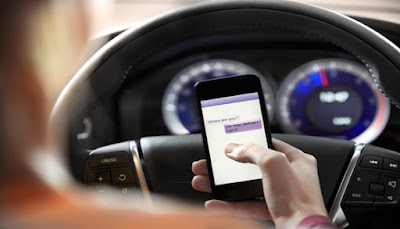When You See the Police Car
If a police car is following you with its siren blaring or
emergency lights flashing, pull over to the right quickly (but
safely) and come to a complete stop in a safe place.
Pulling over right away isn't an admission of guilt. It just means
that you were alert to everything that was happening around you.
Also, by stopping as soon as you can, you’ll have a better chance
of figuring out exactly where and how the officer says you violated
any traffic laws. This information can be useful should you and a
lawyer later need to prepare a defense.
Pull over in a way that will be most likely to calm down an angry
or annoyed traffic officer. Use your turn signal to indicate any lane
changes from left to right, and slow down fairly quickly, but not so
quickly that the officer will have to brake to avoid hitting you.
Pull over as far to the right as possible, so that the officer won’t
have to worry about being clipped by vehicles in the right lane when
coming up to your window.
Right After You Stop
After you’ve pulled over to a safe spot, you should normally
turn off your engine. At this point, you might want to show the
officer a few other token courtesies. You have little to lose and
perhaps something to gain.
Roll down your window all the way. Put out a cigarette if you have
one and discard any chewing gum (within the car). You might also want
to place your hands on the steering wheel, and, if it’s dark, turn
on your interior light. These actions will tend to allay any fears
the officer might have. After all, police officers have been killed
in traffic-stop situations, and the officer’s approach to the
vehicle is potentially the most dangerous moment.
Your dignity might be offended a little at this point, but
remember that you’re just doing a few simple things to put the
officer in an optimal frame of mind.
Also, stay in the car until and unless the officer directs you to
get out. Finally, don’t start rummaging through your back pocket
for your wallet and license, or in your glove compartment for your
registration, until the officer asks you for them. For all the
officer knows, you could be reaching for a weapon.
Excuses to Search
A police officer who stops you for a traffic violation is normally
not allowed to search your vehicle. But there are several exceptions
to this general rule.
After pulling you over, an officer will watch for any sort of
"furtive movement." A sudden lowering of one or both
shoulders, for example, will tip the officer off that you’re
attempting to hide something under the seat.
An officer enforcing a traffic stop isn’t looking just for
furtive movements. Officers will look for anything incriminating
that’s in “plain view” (like open beer or wine bottles, joints,
or roach clips). Discovery of one item in plain view often leads to a
thorough search that reveals more incriminating or illegal objects.
If you’re arrested and your car is towed, the police may
generally make an “inventory search" afterward, even if they
have no reason to suspect there's anything illegal inside








